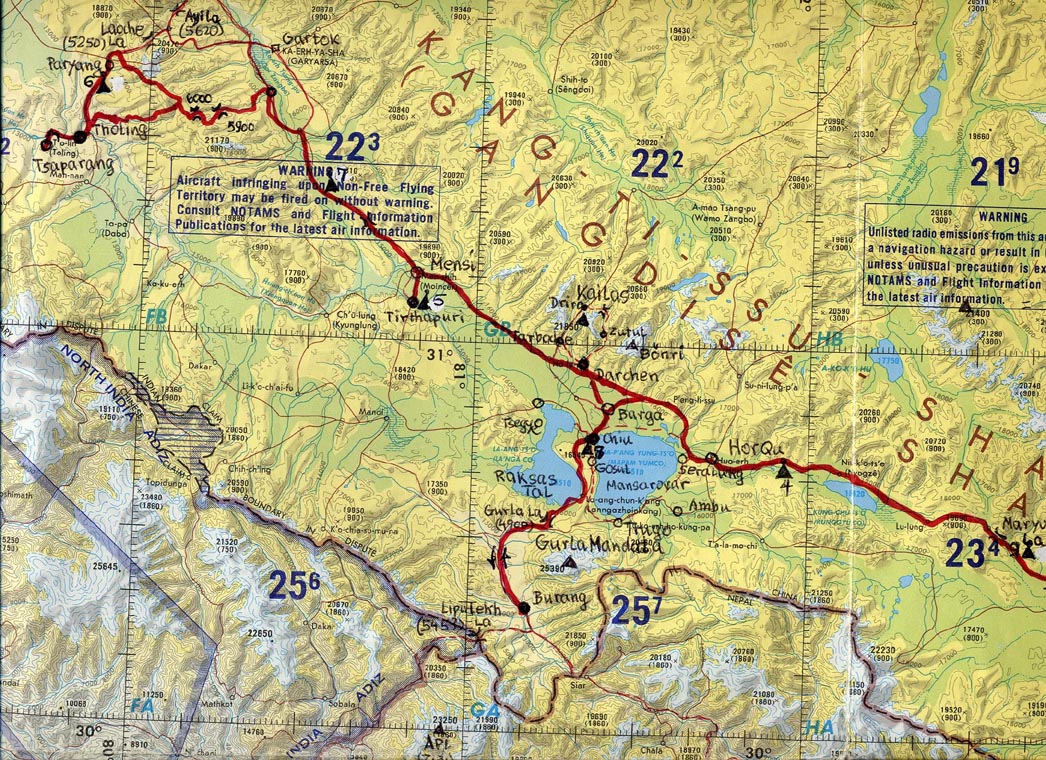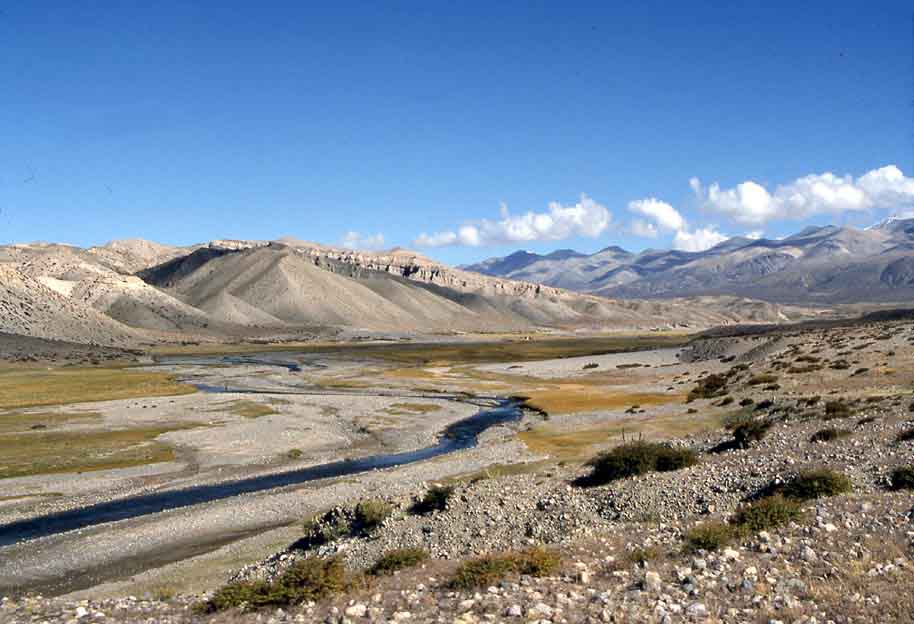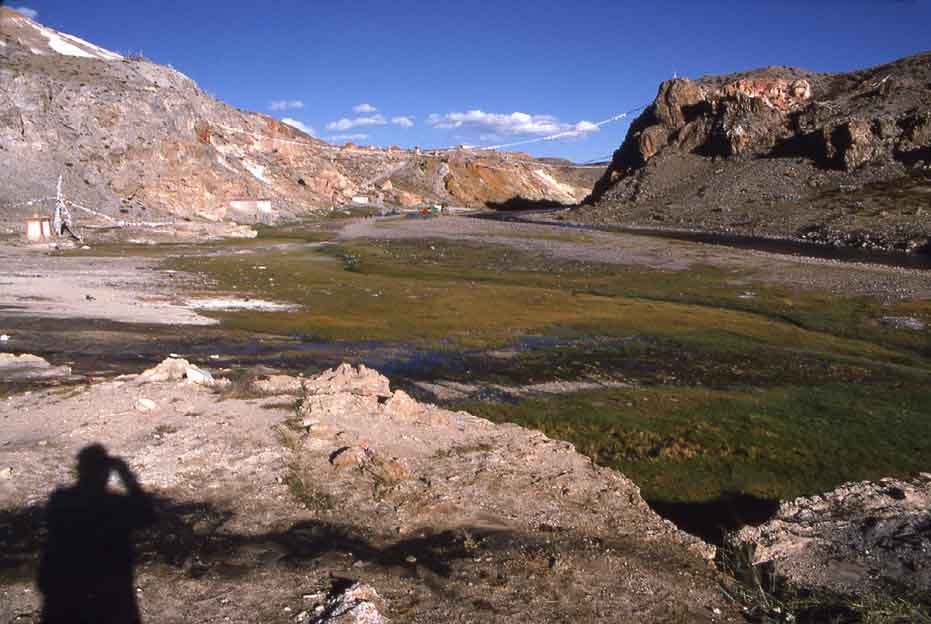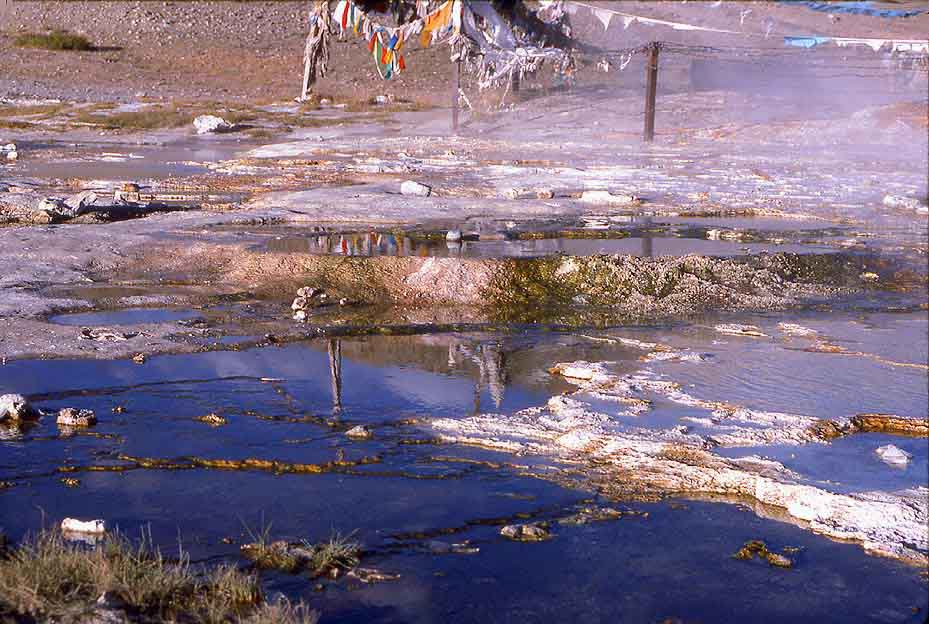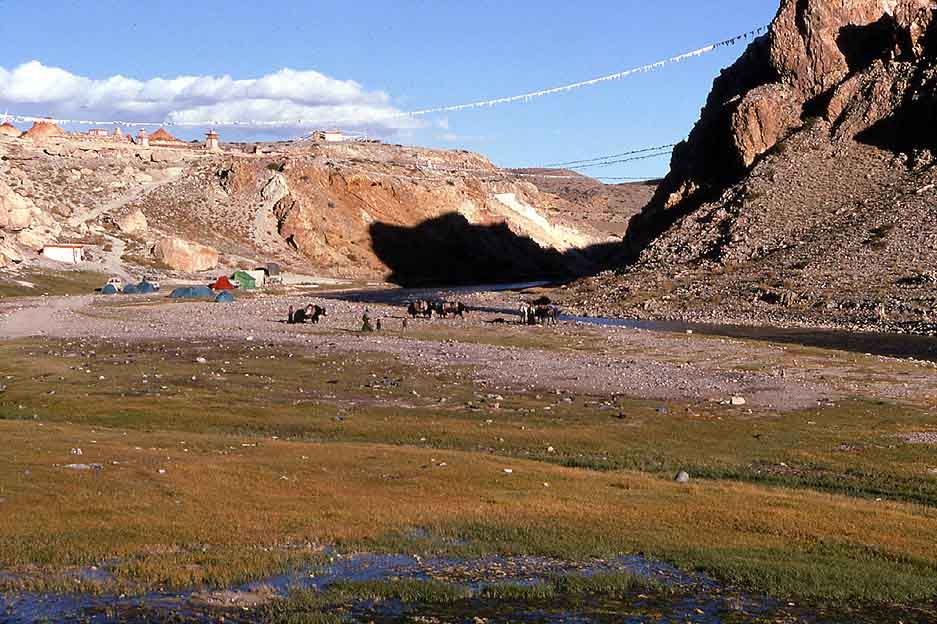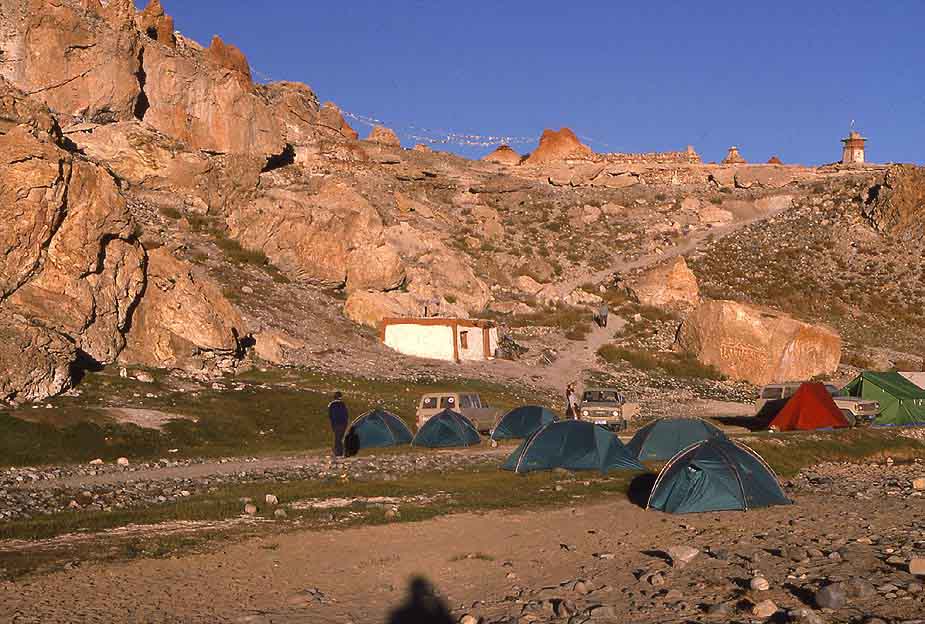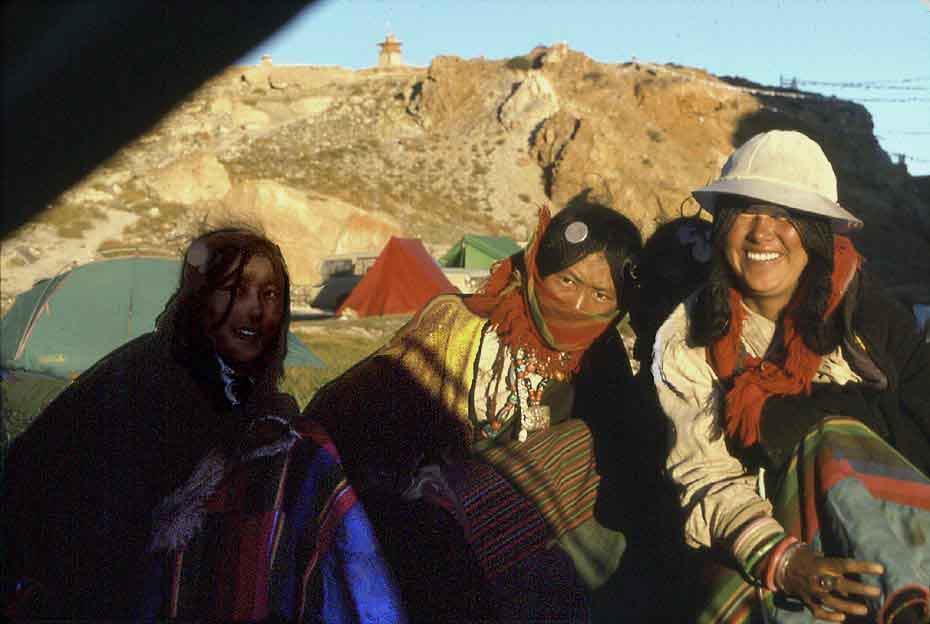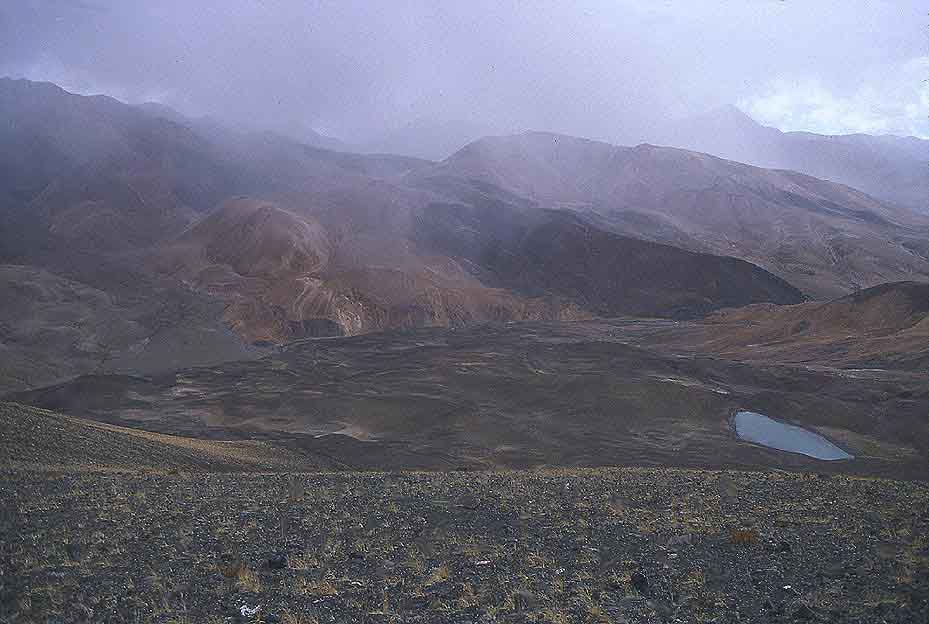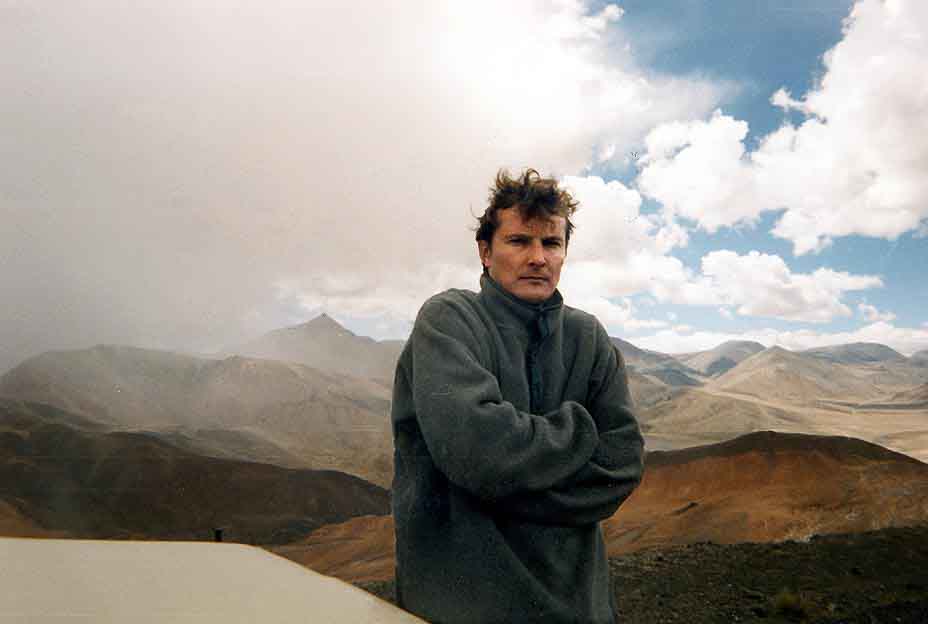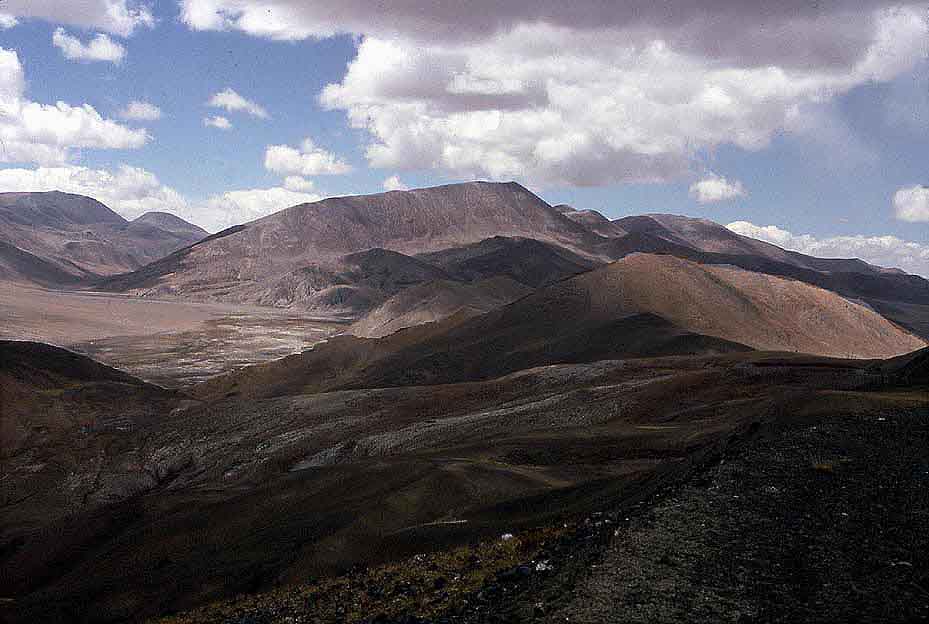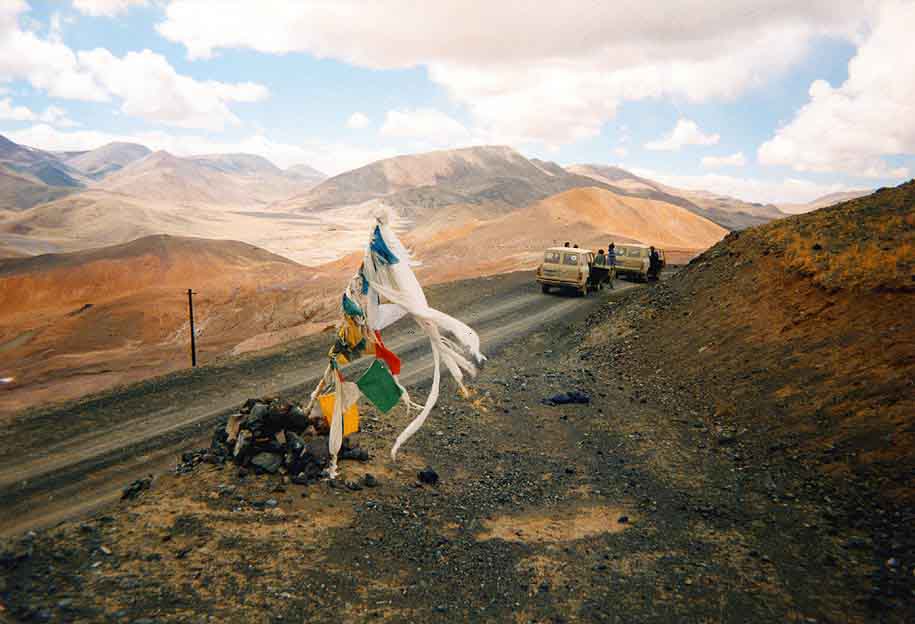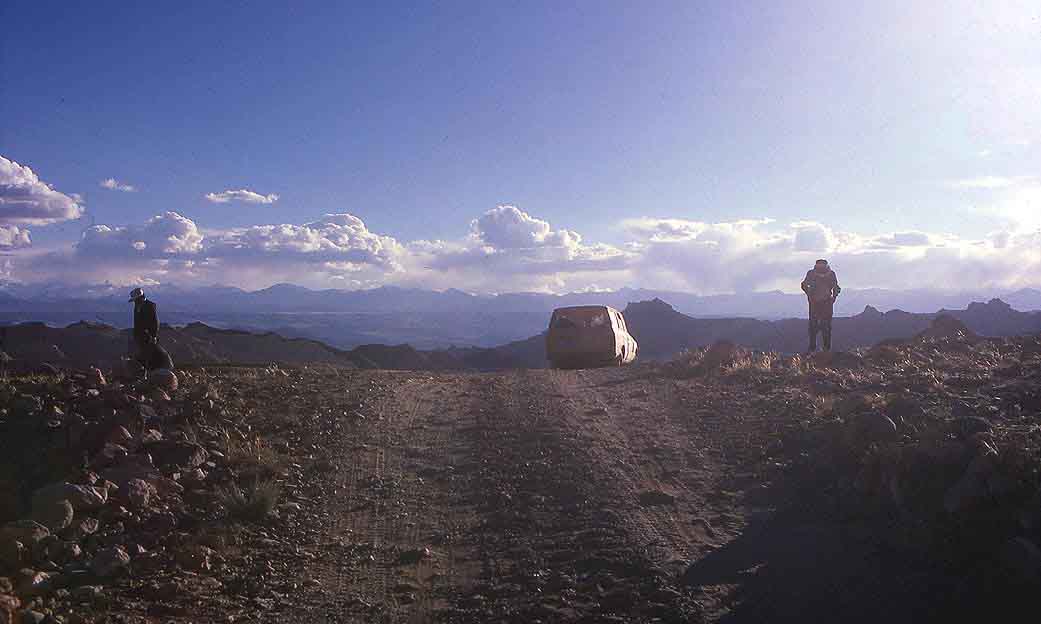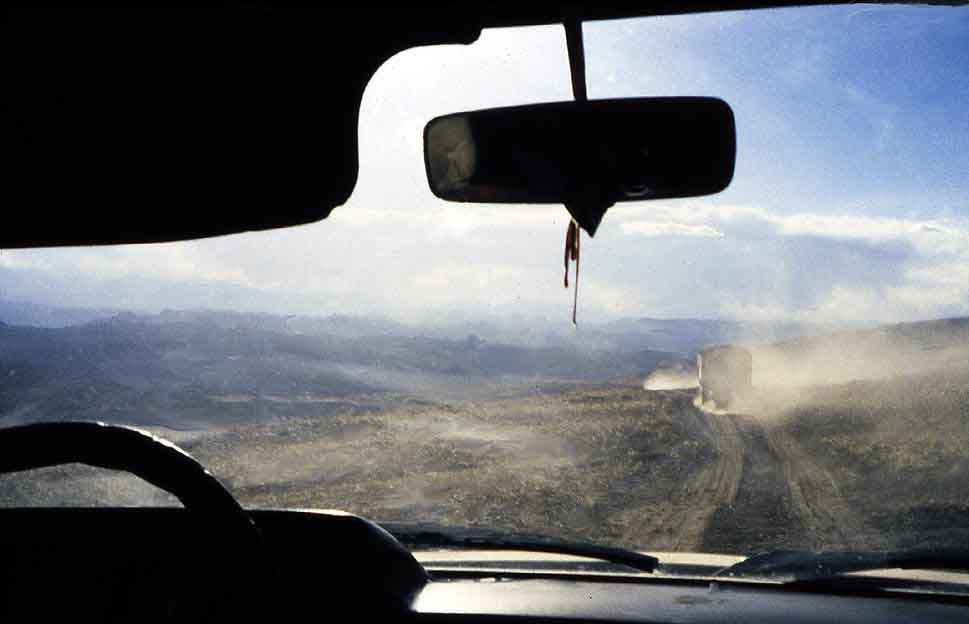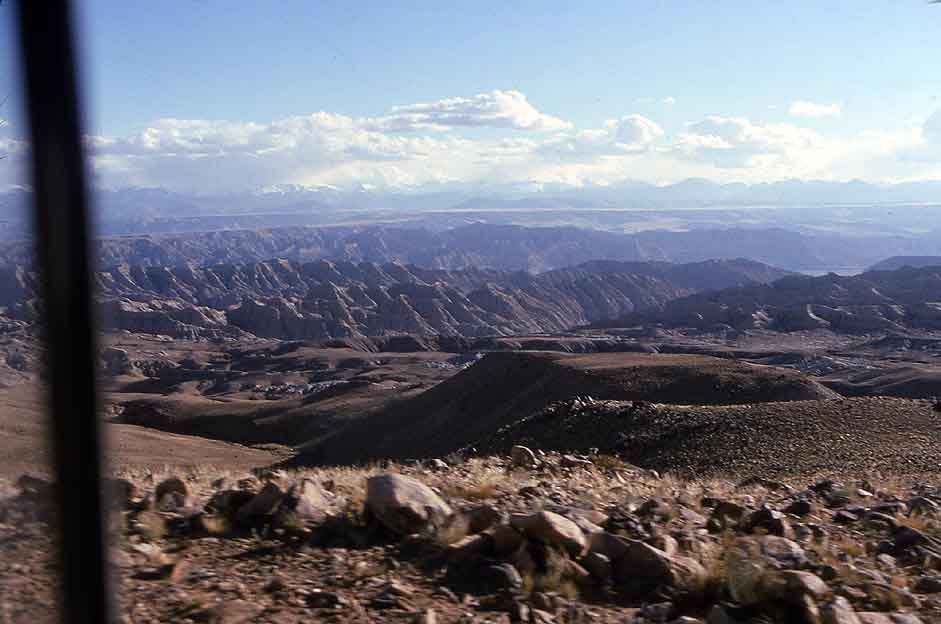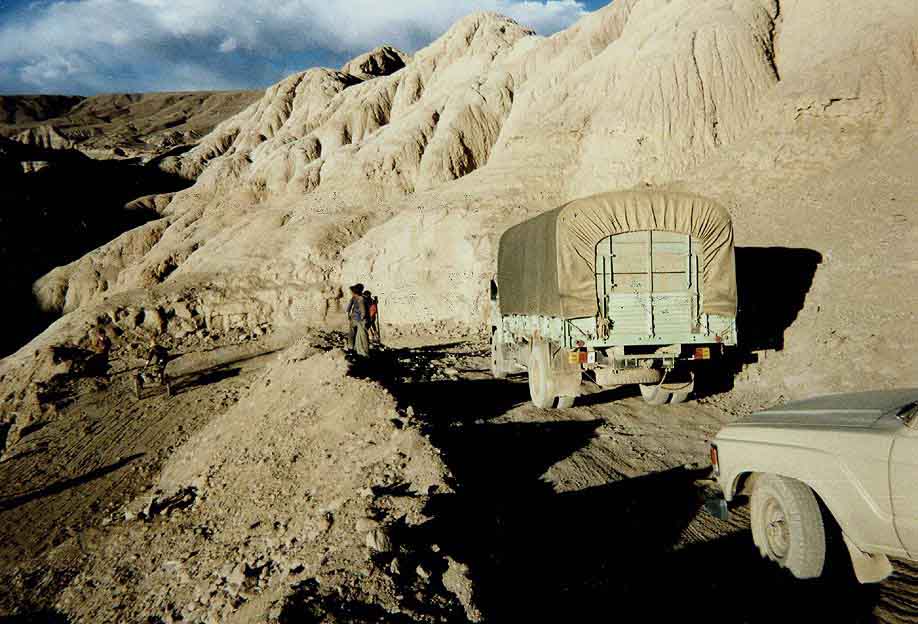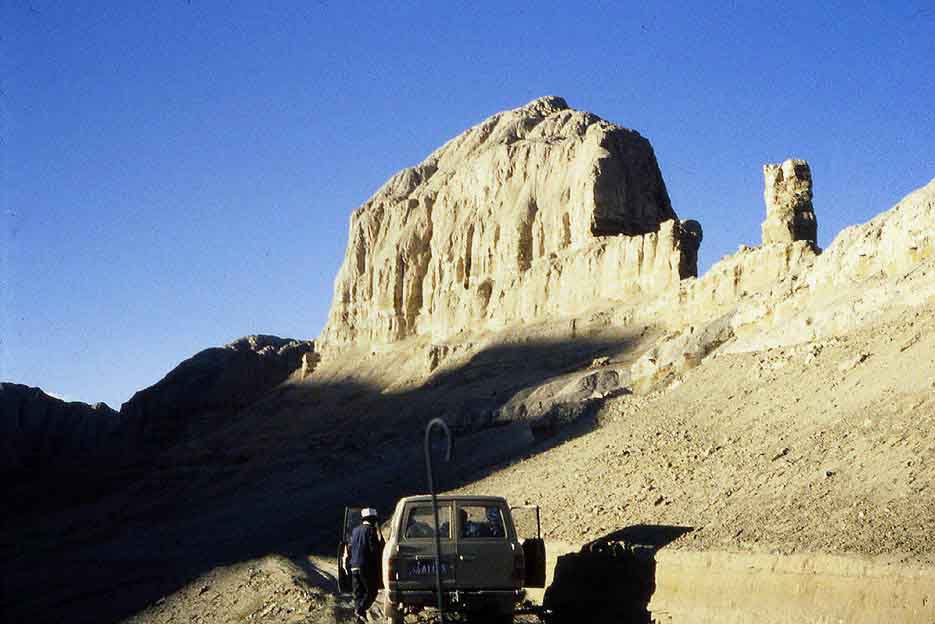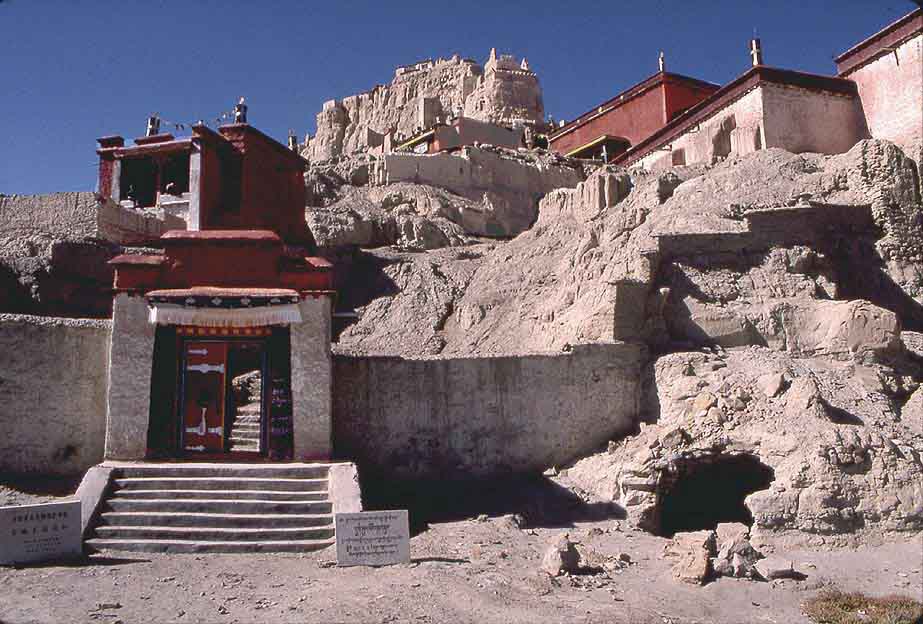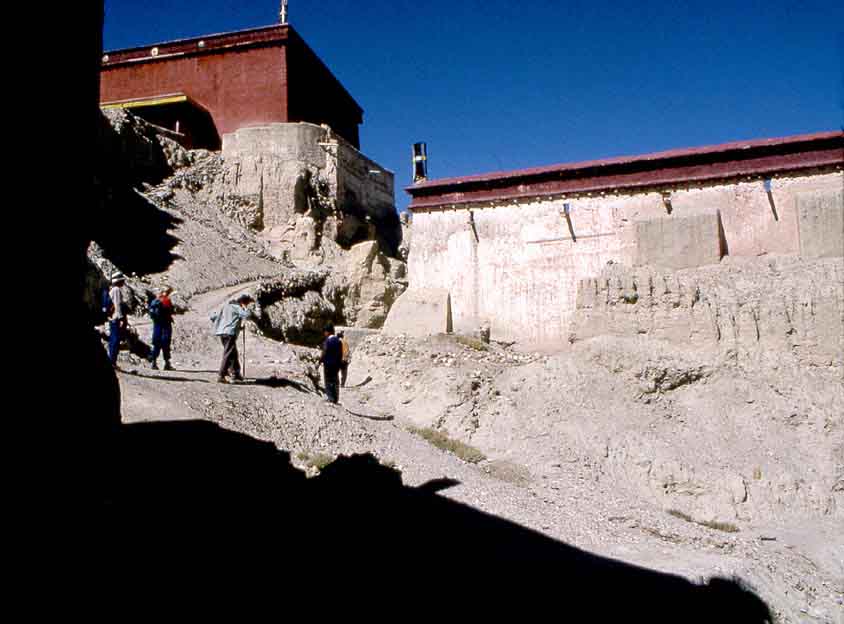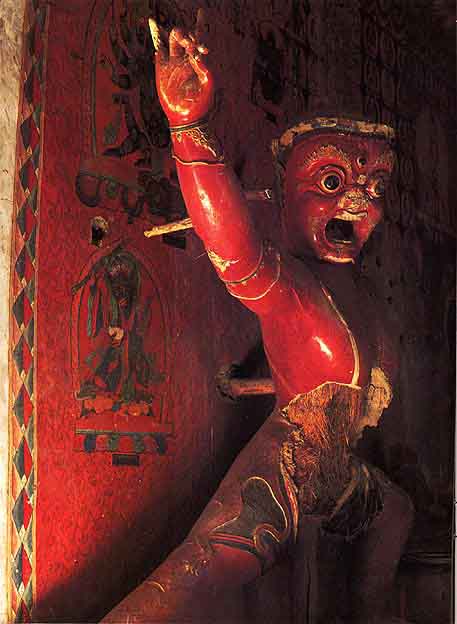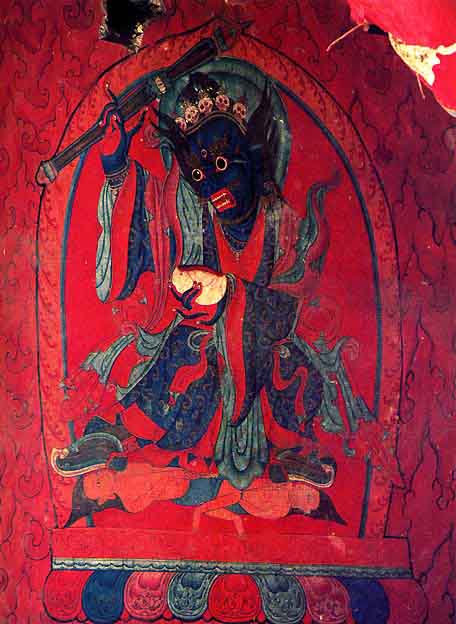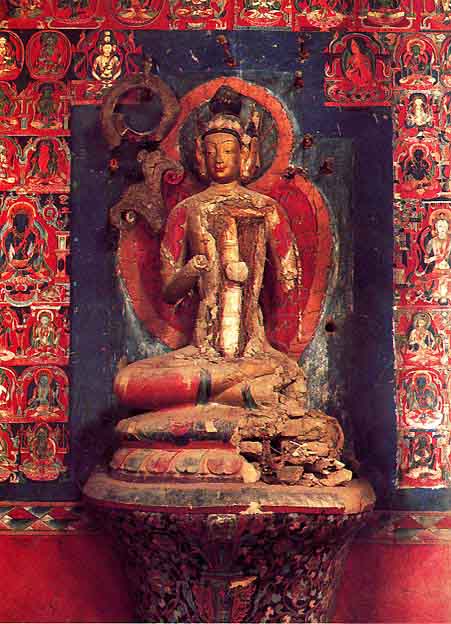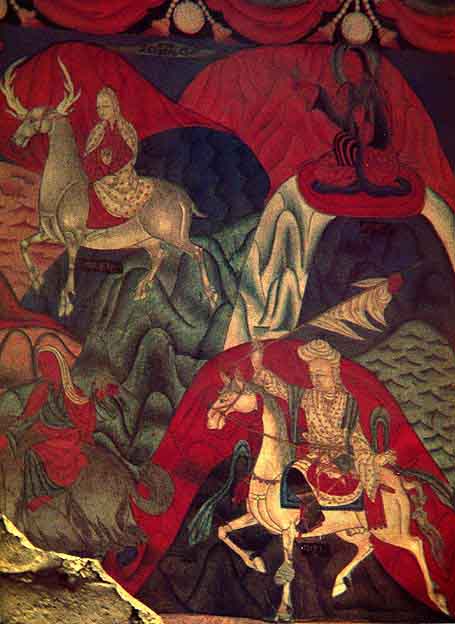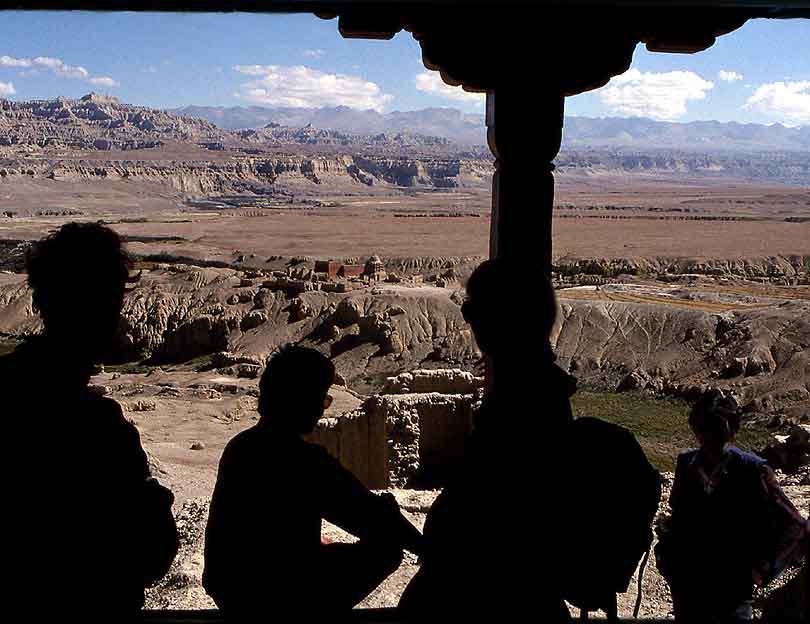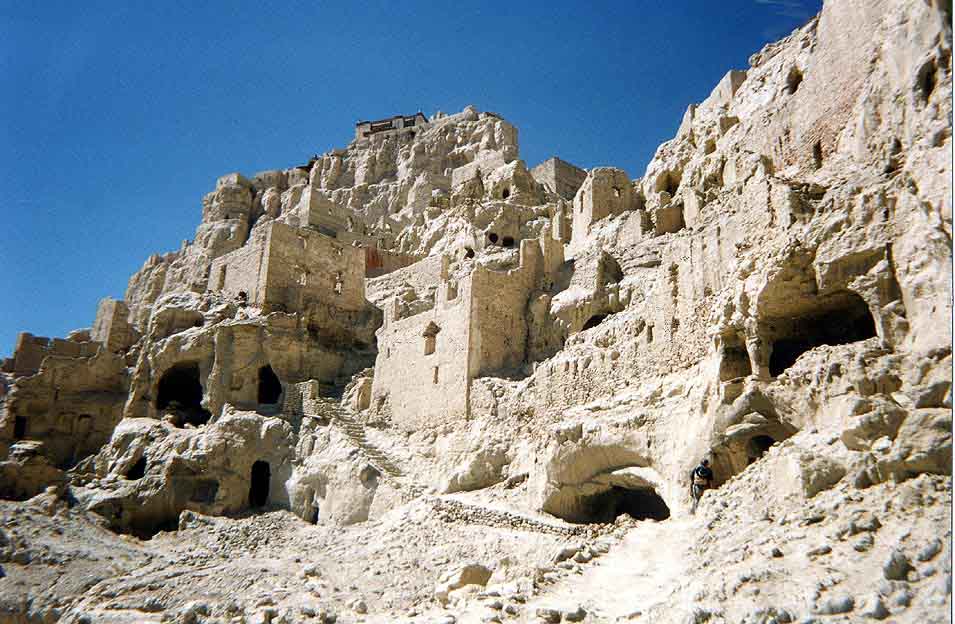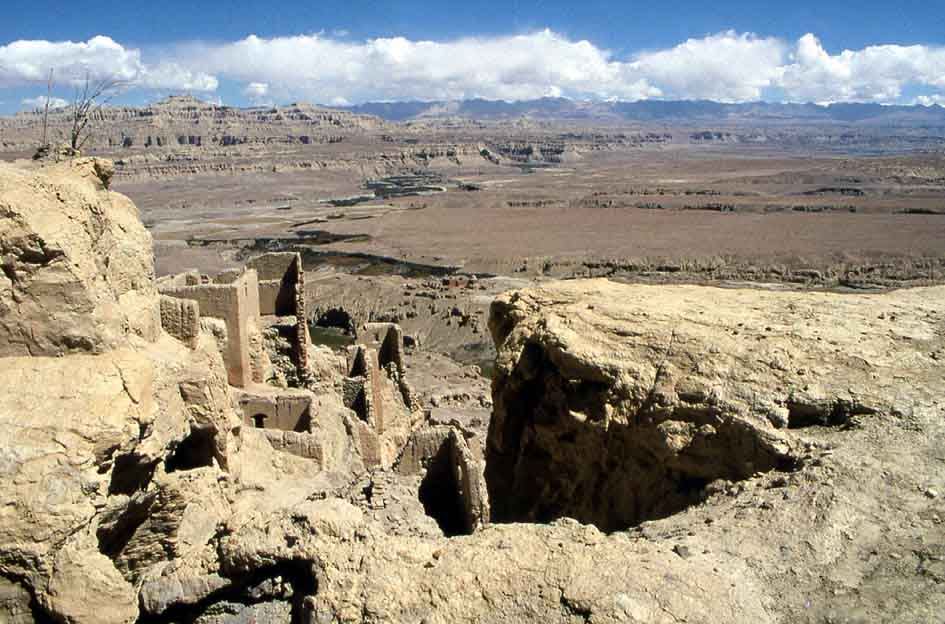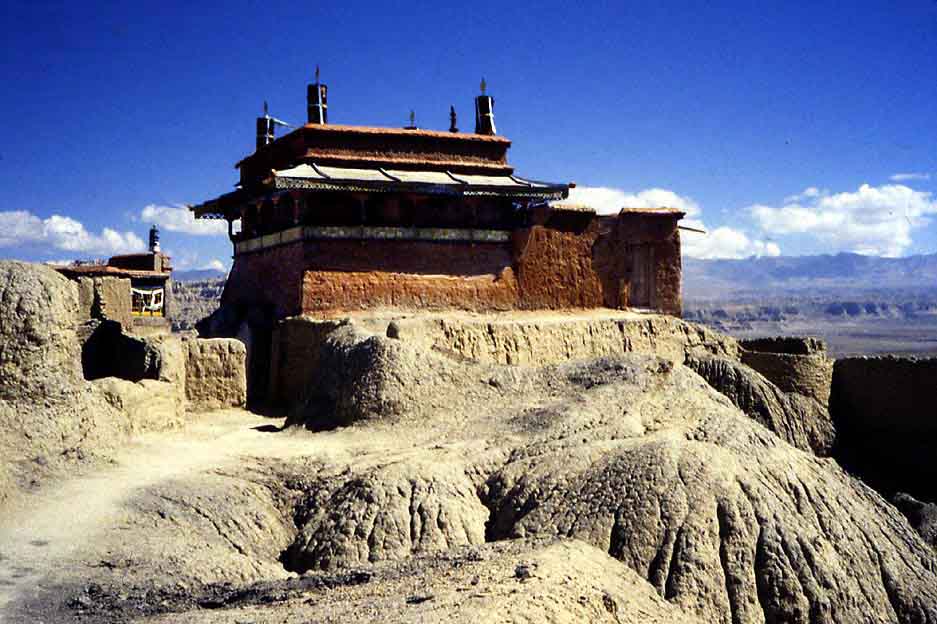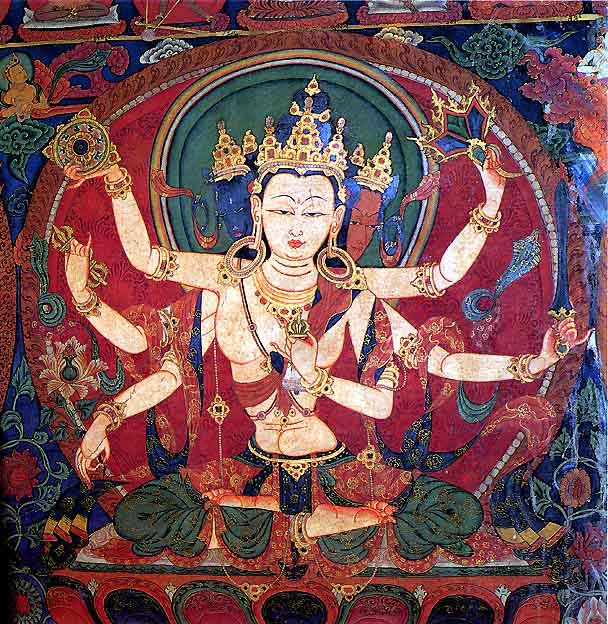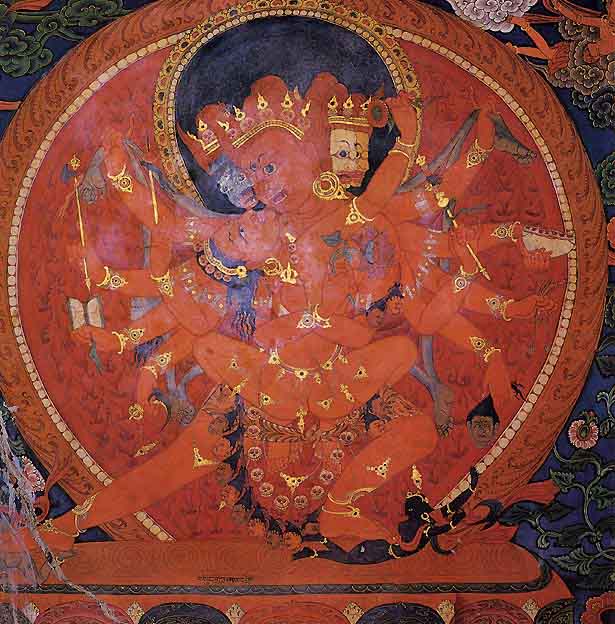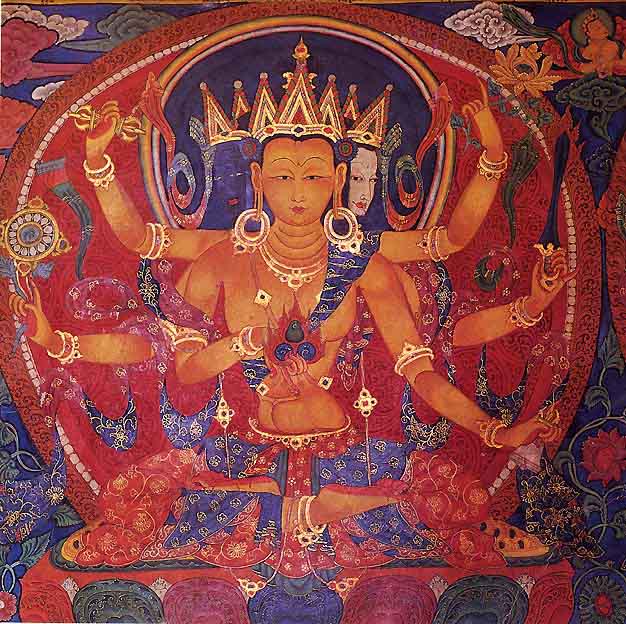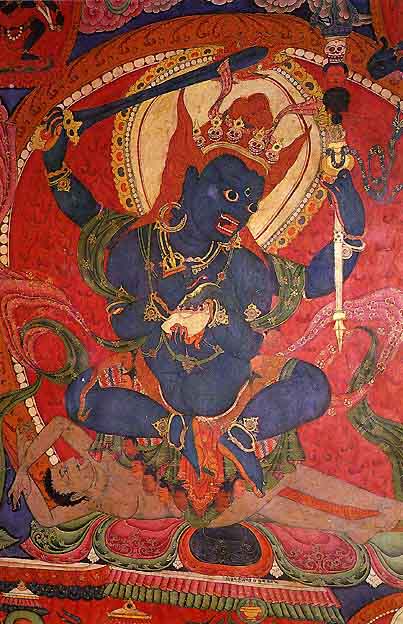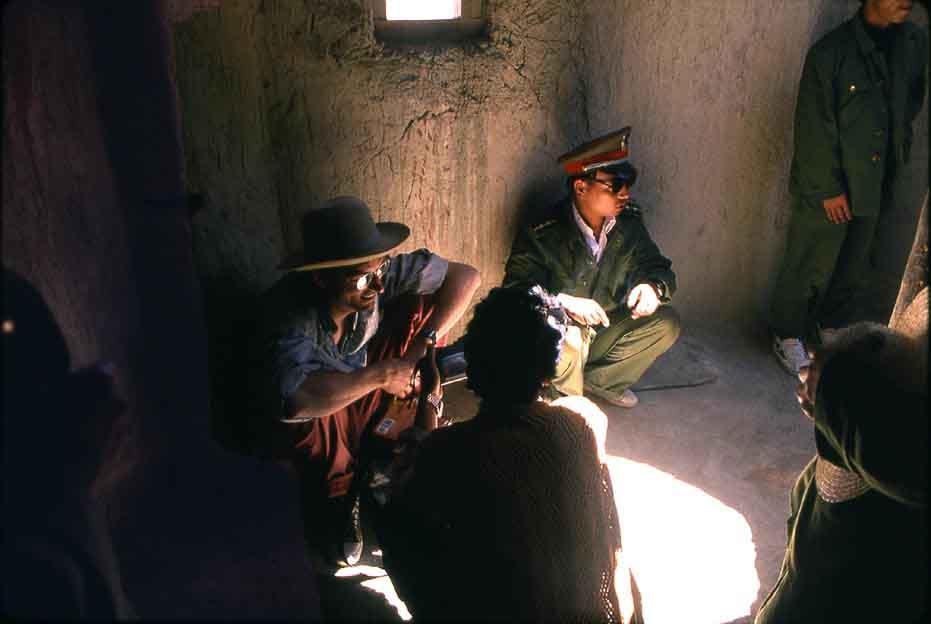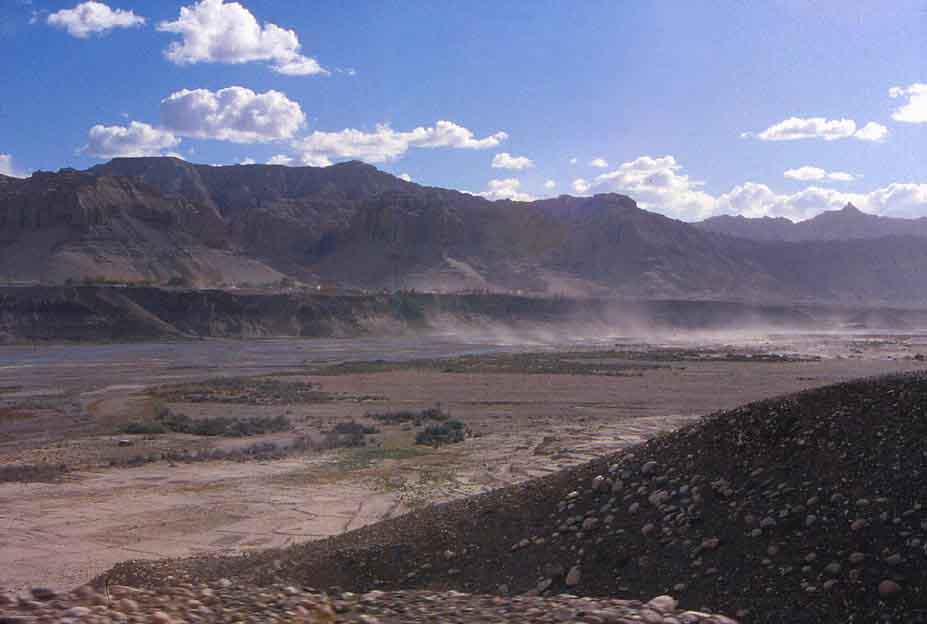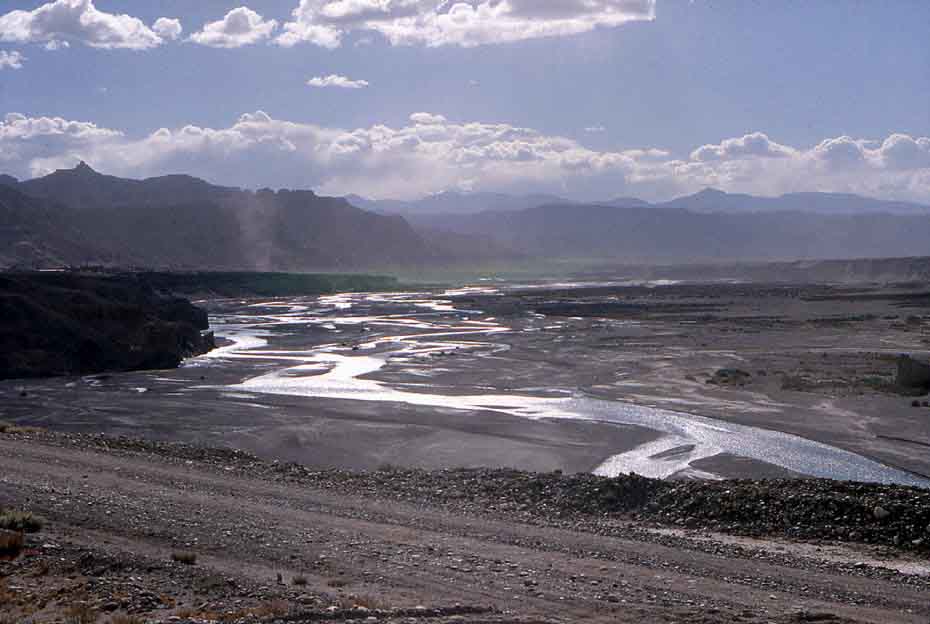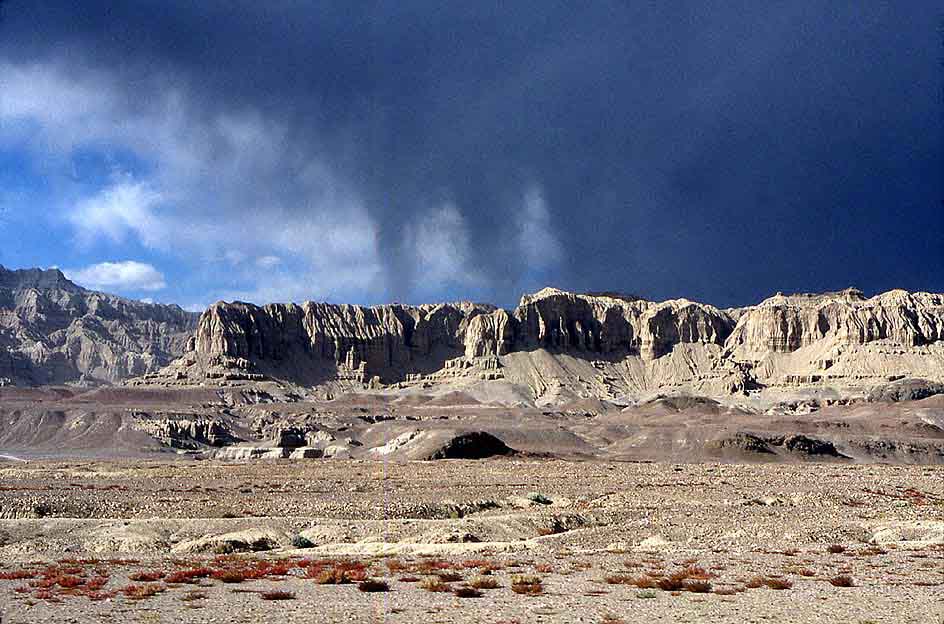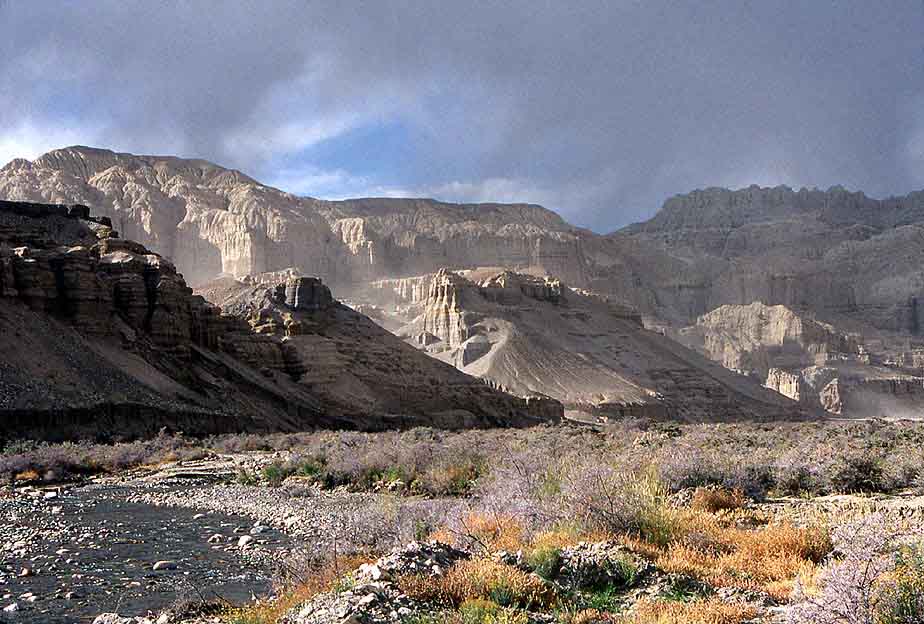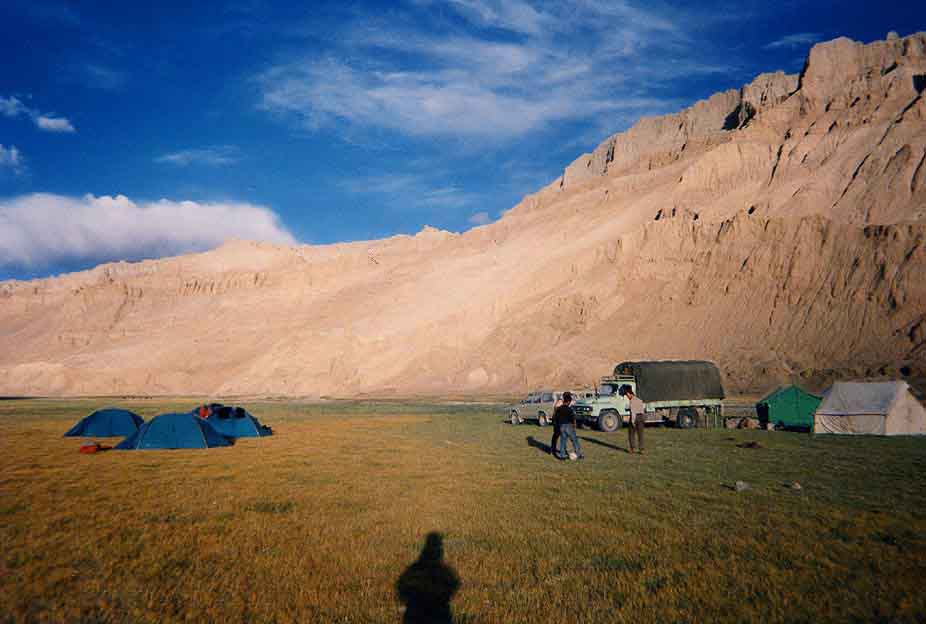|
Magic
Tirthapuri and the Lost City of Tsaparang |
Map 6, From lunch
under Kailas to Camp 5 at Thirtapuri, and next day across the two high passes to
Thöling. On the following day to Tsaparang and back to Camp 6 in the Sutlej
Canyon. On the next day we crossed the high passes again and stayed in Camp 7
just before the "bulge" to reach Darchen on the following
afternoon.
.
Behind Menzi, as we
drove south towards Tirthapuri (its Sanskrit name), the country became very
beautiful in the late afternoon light. The river is the young Sutlej flowing
towards Tirthapuri.
Tirthapuri
Tirthapuri is
the rungjung— "naturally sacred" place per excellence. Sacred to
Yeshe Tsögyel, the Sky Dancer, the consort of Padmasambhava and fierce
reincarnation of Vajrayogini. Its red, volcanic outcroppings have great
power, but its greatest secret are the hot springs.
Tirthapuri hot
springs, a steaming, sulfuric collection of springs and pools on a salt
incrusted hill above the Sutlej.
The colors,
reflections, and steam clouds shimmer beautifully in the evening sun:
On my return
from the springs I discovered a family of Chang Tang nomads with three yaks and
a horse for the gentleman. The women sat up their tent near the river.
Our tent
village. Barbara and the young had gone on a tour of the little gompa on top of
the hill. I fell asleep in my tent...
...and was
awakened by tinkling bells and giggles. When I opened my eyes I had these
apparition of four girls in their sunday best.... They came back again later at
night to spy on the foreigners having dinner. Cornelius was able to catch the
youngest on the left and interrogate her in Chinese and a sprinkling of Tibetan.
They were on a four-weeks pilgrimage before the winter came.
Next morning we were
awoken by the girls circulating the gompa by prostrating themselves all the
way....
Crossing
the High Passes to Thöling
In the old times one had to follow the
ancient caravan route through the wild Sutlej Canyon to Thöling, a trip that
took Sven Hedin and Tucci three weeks — if one did not get lost. In the sixties
the Chinese blasted a "New Road" across the mountains, which we now took.
Unimproved and often very exposed, it precariously climbs a steep mountainside
above Chinese Radar and military communications camp. The top is a desolate
jumble of ancient volcanic craters, small lakes and boulders. It began to
snow.
Jeroen
shivering in the sudden cold. Behind him one of the volcanic plugs surrounded by
its crater.
Another
crater. We are nearing the first of two passes....
A small lhato
— cairn marks the first pass: 5200 m! Amazing that our Toyotas are so well tuned
that they take this without stuttering. — The drivers tinker with the engines
every night. The second higher pass follows soon it is right below the snowline,
but looks entirely uninteresting, a shallow hump.
A "pee-stop" on the
far side of the pass. Our need for privacy has dissolved in thin air. A broad
view now opens across the Sutlej canyon. For two hours we travel west crossing
one run-off canyon after the other.
Suddenly, the
truck veers off the road and heads straight for the canyon's edge. We grab our
seats. Pardu laughs —now comes the shortcut...
... and we finally
get a view of the lower part of the Sutlej Canyon, a wild jumble of eroded
mountains the extent of which is larger than the Grand Canyon — and deeper: 3000
m from the pass.
We continue on a
barely visible spur across a rock-strewn mesa, until we find ourselves stuck on
a track cut into the soft soil. The truck had made a wrong turn and nearly gone
over the edge at a place where the road had been washed away.
It takes a
while for the truck to back-out and follow a sharp hair-pin where a prison crew
digs with hands and shovels.
Wild formations rise
in the afternoon light, castles and pagodas, and watchtowers. At the bottom we
scramble along in a narrow brook bed carefully avoiding the biggest boulders.
Not a good place to be in case of a flash flood. - Dead tired we arrive in Thöling after
nightfall. The tourist guesthouse is full. Pujung finally finds us
accommodations in the military barracks were we sait and waited at 10 o'clock
while Bakhi scrambled up dinner for us. He had not been able to find a
restaurant for us....
Tsaparang
Tsaparang is one of
the "Lost Cities" of Central Asia. Although its existence had been well known
from the diaries of Andrade a Portuguese missionary who had spent several years
there in the 1620s, it was only discovered in 1933/34 By Tucci. Sven Hedin had
stayed in the village of the same name on the Sutlej, but the locals had not
revealed the old citadel in a side canyon.. The unique old temples, the only
buildings of the city that had survived its destruction in the outgoing
17th century, had been badly ransacked during the Cultural
Revolution. Looking for treasures they had destroyed most clay sculptures — but
the 15th-century murals have
survived....
.. all the greater
was the surprise to find this view of the site. The temples had been stabilized
and roofed and an entrance gate had been installed. — We are charged $60 person
by the bönpo, and a fine of $32.50 for not having come via Ali. Where the
fine went remained a mystery, quite possibly into his own pocket.
Barbara,
Monique, Jeroen and Pujung on the way up. The higher building is the Red Temple
to the right the White Temple. Photographing inside the buildings was strictly
forbidden, the guardian with the keys followed our every move. There exist black
and white photographs by Tucci (informative but very poor reproductions) and by
the wife of the German Buddhist Angarika Govinda (mostly
sculptures).
In 1985 Frits Staal
from Berkeley and Adelaide de Menil visited Tsaparang and published a few of
Adelaide’s photographs in Natural History Vol 95, No. 7, July 1986. I copied
three from the White Temple.
|
|
The badly damaged
sculpture of the protector Hayagriva.
|
|
Mahakala on the wall
behind Hayagriva
|
|
The temple is
dedicated to Vairocana, remnants of one of the Vairocana sculptures and the
murals next to him (15th century).
|
|
Part of a freeze
above the entrance to the White Temple exhibiting a different style of painting.
Staal thinks it is influenced by Central Asian or Iranian
painting.
The view over
the Sutlej from the porch of the Yidam temple.
The citadel
and the path, a climb of only 180 m (at an altitide of only 3200 m). It was an
excruciating labor that took me almost an hour and convinced me that I was in no
condition to walk the Kailas circumambulation route....
The view of
the Sutlej valley from the top. In the near distance, framed by the crack on can
see another temple complex across the valley, which is of no particular
interest.
The object of my
dreams was this small Demchog Temple on top of the citadel. Demchog
(Chakrasamvara) is a fierce manifestation of Manjushri popular in Western
Tibet (14th to 17th century). The temple is completely
dark inside with huge murals of Mandalas and Tantric Yab-Yum images on its
walls. It was used for initiation rites and for that reason its imagery is
highly esoteric. The following color photos were taken by Aschoff, a German
physician, and H. Wyer, after the Cultural Revolution and before the present
restauration. I scanned four photographs of the frescoes (each about 2 meters
high) from H. Weyer and J. C. Aschoff: "Tsaparang, Tibets Grosses
Geheimnis," Eulen Verlag, Freiburg im Breisgau, 1987 (out of
print).
|
|
Demchog Temple,
Buddha Vairocana with a Bodhisattva crown
|
|
Demchog Temple,
Heruka with the Wisdom-Dakini in Yab-Yum
|
|
Demchog Temple,
Buddha Ratnasambhava with a Bodhisattva crown.
|
|
Demchog Temple,
according to Aschhoff a Canda-maha-rosana(?), the Supreme Addhi-Buddha in
a terrifying manifestation. I very much doubt that (note the magic wand) and
would argue it is a Mahakala (because of the crown). For a while I tried to sit among these
overpowering images and adapt my eyes to the darkness, but was stirred out of my
meditation by a horde of Chinese soldiers who tramped through the tiny place and
one after the other stumbled over my crossed legs....
Meanwhile in the
vestibule Cornelius recorded the guardian singing a sutra to impress the
Chinese. The character in the corner was their officer. Furious, I made an ass
of myself by berating him when he kicked an empty soda-pop can into the
ruins.... Glowering at my long nose he said nothing and walked off with his
troops.
Our
Return through Thöling
Thöling (on
the ledge above the Sutlej) swept by a dust storm.
A dust devil
following us on our way to the Sutlej bridge.
Rain over the
canyon we had come down in and would have to climb next..
The lower end of the
Shortcut.... Not wanting to drive up the shortcut Agha had raced ahead and
forced everyone to follow him to a meadow hidden in a side canyon.
Camp 6. A wonderful,
quiet place sheltered from the wind. Next morning we drove the long route back
across the two high passes to Darchen and the Kailas korlam.
